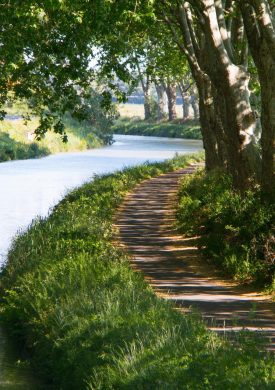On 06.10.2023
Reading time: 2 min
One not so sunny day (a rare thing in these parts) I said to myself: how about a trip to the old cemetery?! I grabbed my trusty Canon camera and headed out!
I visited reception and a friendly face gave me a map to help me get my bearings and uncover the hidden gems! I spent over an hour wandering around the lanes lined with cypress trees and making incredible discoveries. It’s an open-air museum that whisks you back in time through the history of Béziers.
The cemetery is laid out in terraces like a Mediterranean garden and covers almost 4ha. I didn’t have time to see it all but I used my map to take shots of the most famous tombs:
The tomb of the Moucadou virgin: This virgin is said to be miraculous after a child was cured by a tissue wet with her tears… In the early 20th century, a woman visited the family crypt as her daughter was desperately ill. She noticed that tears had welled up in the statue’s eyes and wiped them with her tissue. She went home. Her daughter was feverish so she mopped her brow with the same tissue… and her daughter was cured. This virgin has been the Madonna for desperate cases ever since.
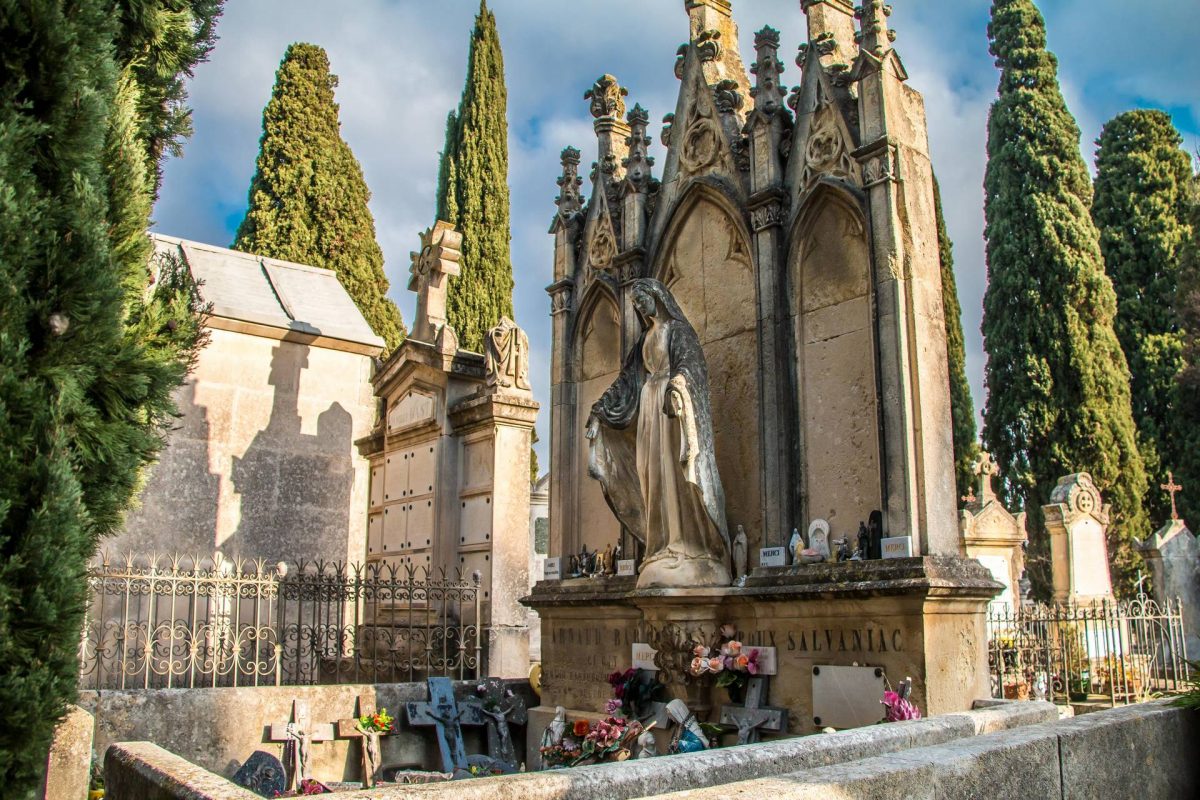
Tombs by artists (sculptors) Jean-Antoine Injalbert, Jean Magrou, Jacques Villeneuve, Louis Paul.
Another landmark piece is the tomb of the engineer Jean-Marie Cordier who designed a device to bring the Orb’s water up to the town to supply the fountains.
The Chappaz tomb for a family of vermouth makers. The tomb itself was designed by Béziers sculptor Jean-Antoine Injalbert
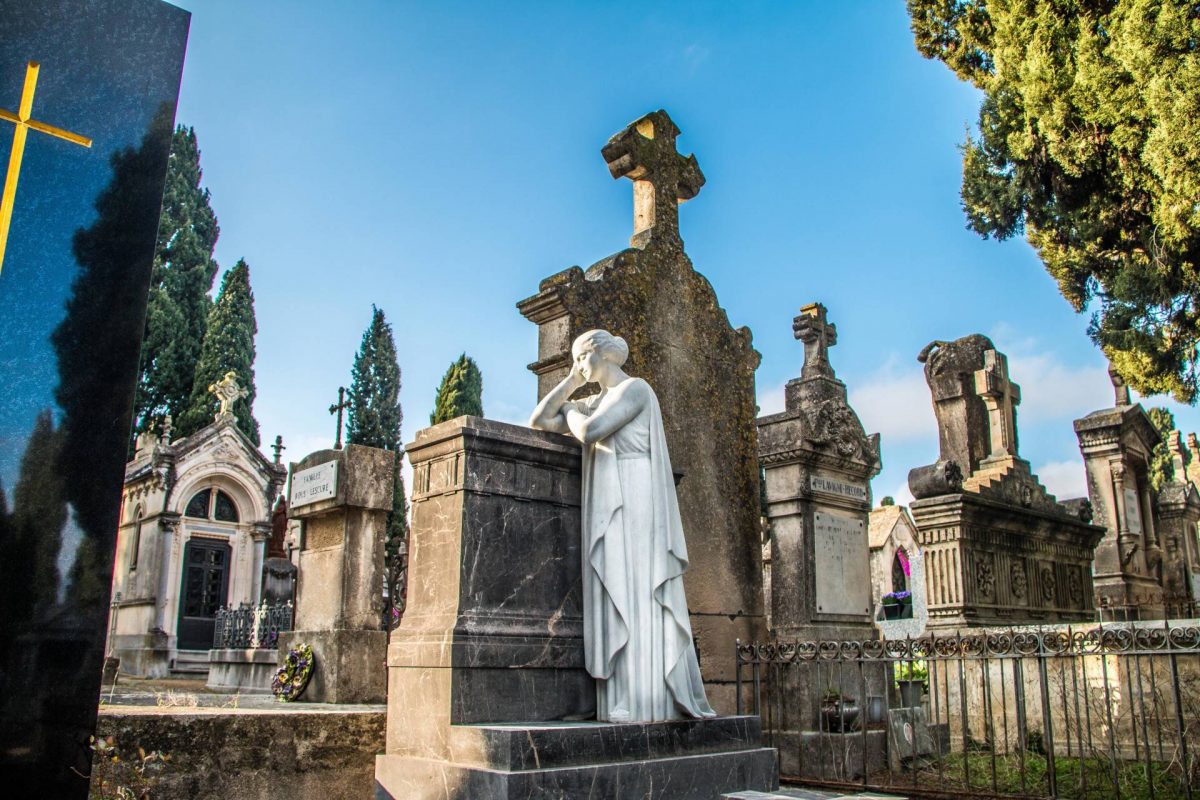
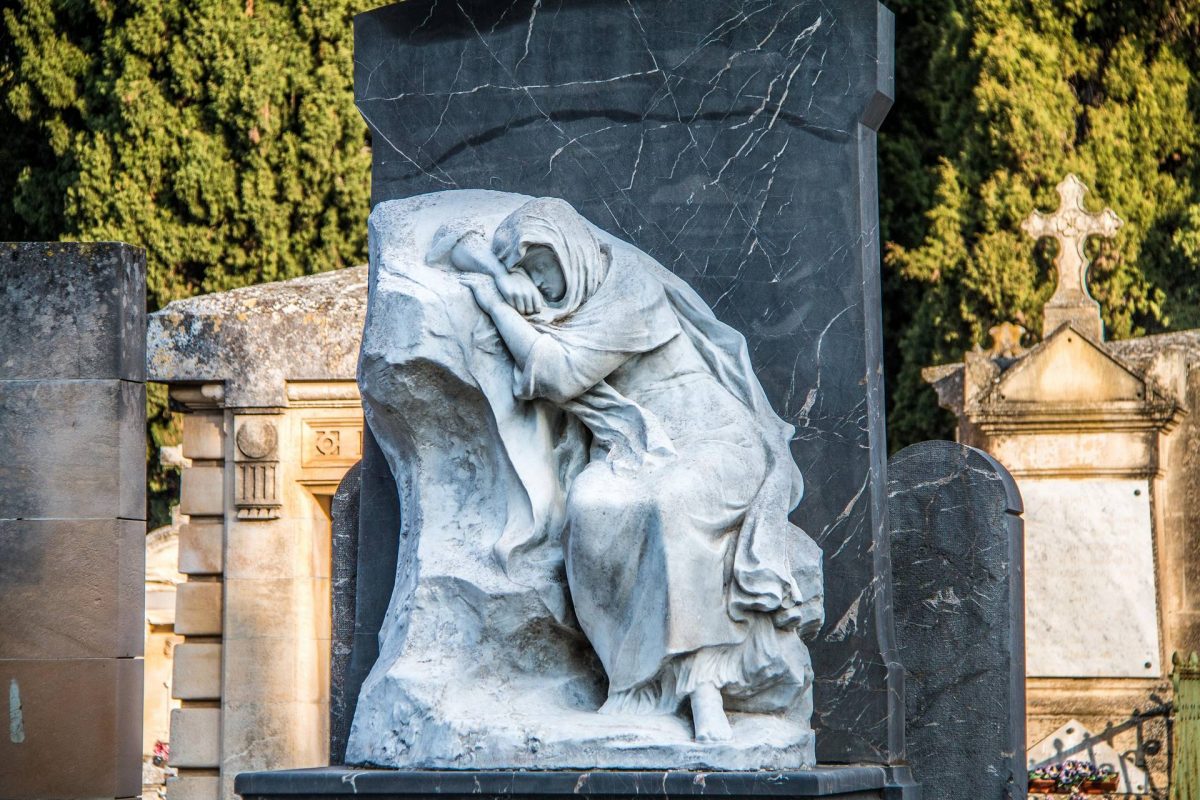
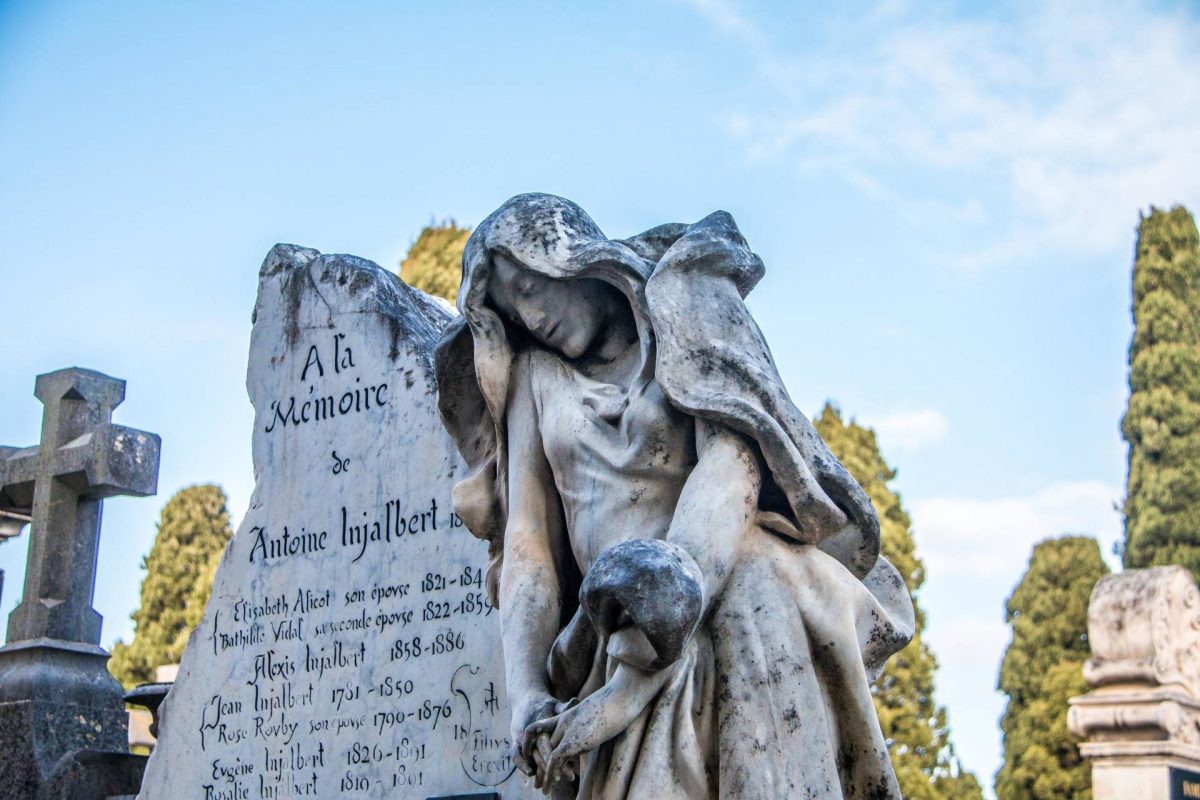
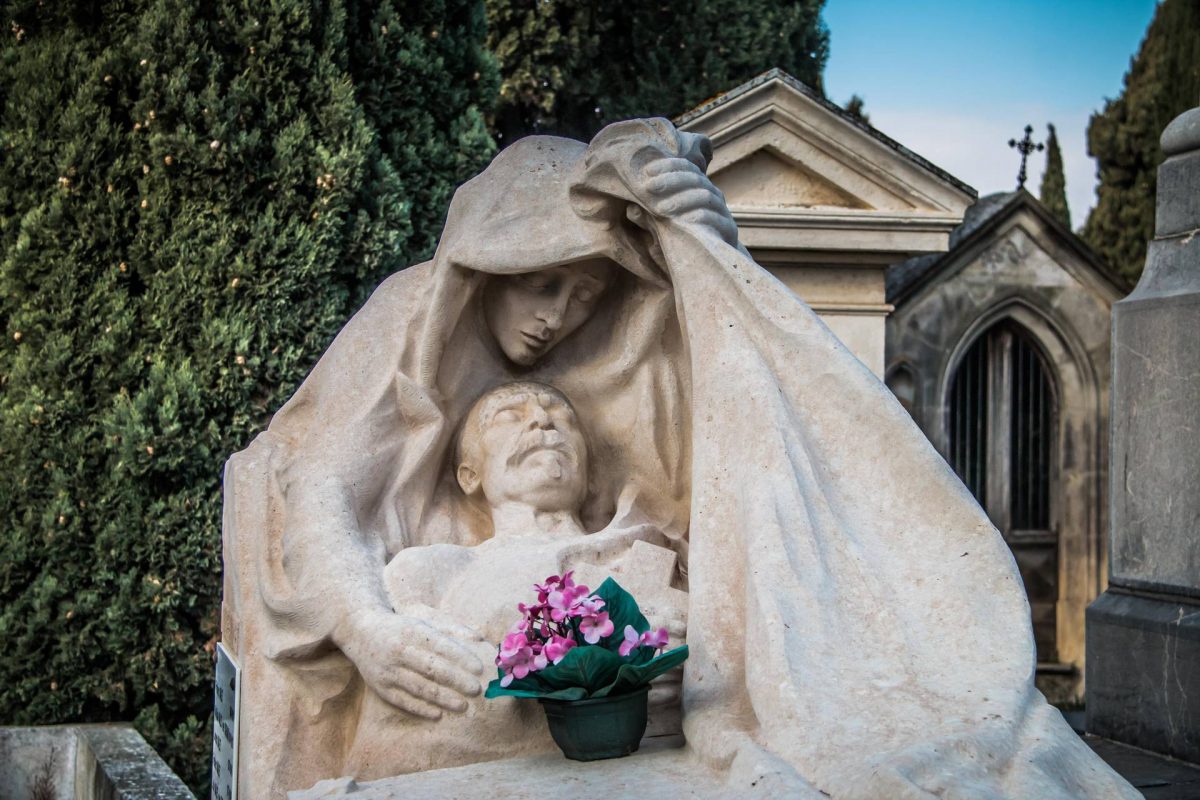
The Assemat-Cadenat tomb for the printer lithographer whose bronze door is by Jean Magrou.
Then there’s the tomb of Auguste Fabregat, a lawyer and mayor during the Second Empire, laid to rest under a bronze bust by Injalbert.
And many more including the theatre director Alphonse Cavaillès, flower painter Gaston Cugnenc, poet and columnist Léopold Dauphin, tenor Joseph-Valentin Duc, artist Gustave Fayet, novelist Louis Gueret, luminist painter Raoul Guiraud etc.
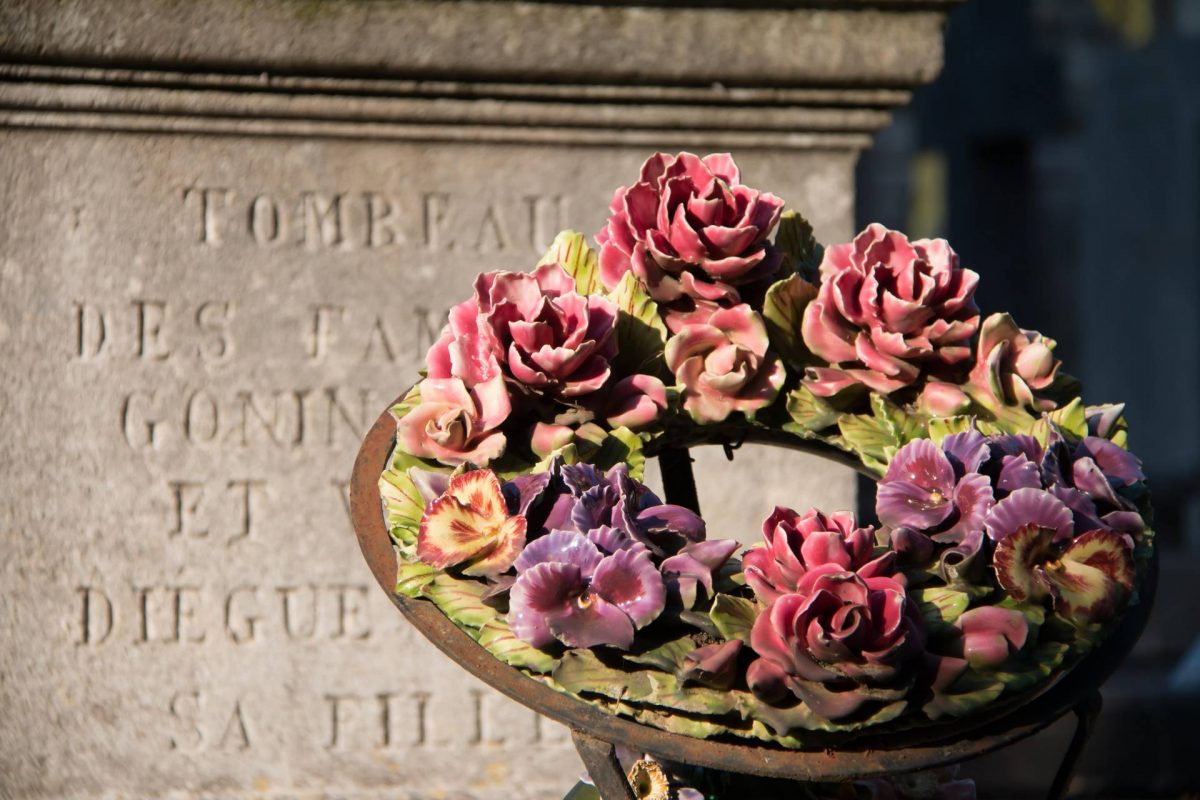
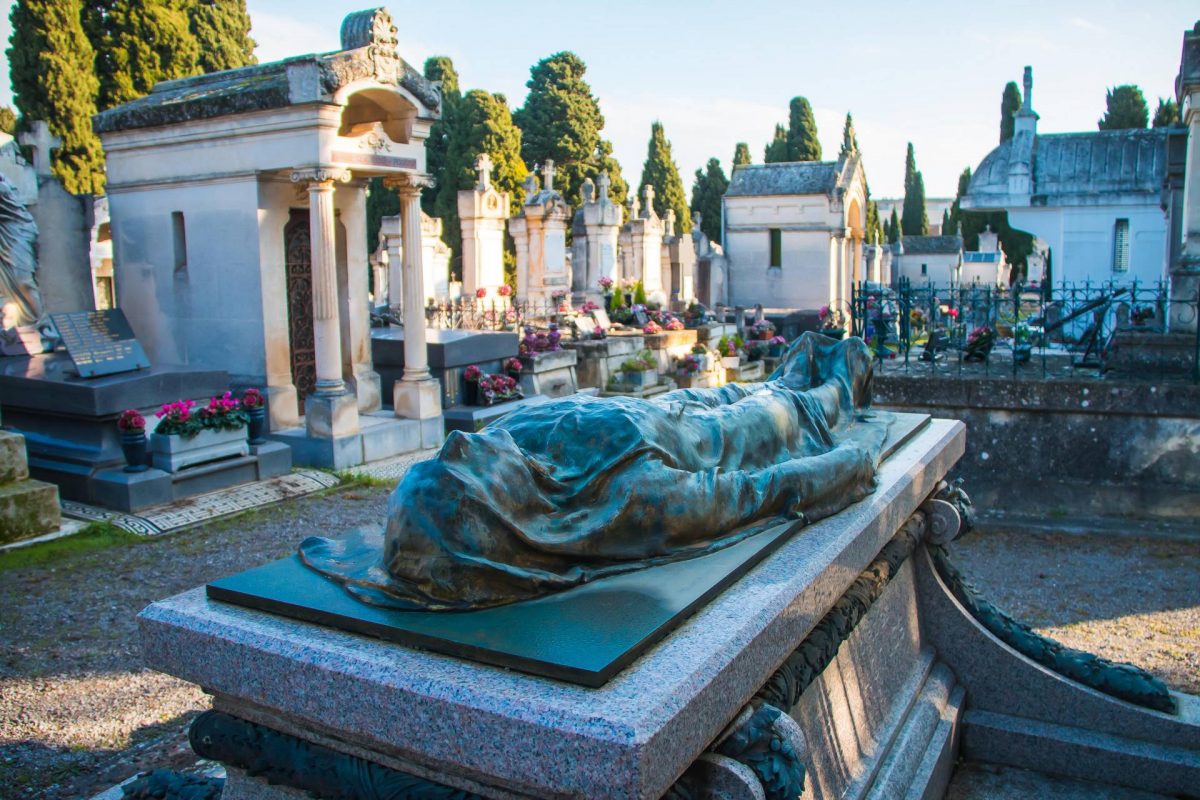
There’s nothing sad about a cemetery. Maybe wistful but not sad. Cemeteries are a gateway to culture, just like opera, museums and books are. Funerary art is fascinating.
I spent an hour exploring the statues, architecture, funerary artworks, their codes and vocabularies.
Every tomb is different and has its own story to tell. Some of them are very old and some of them are very unique, just like the Egyptian-style Pancol-Boussière family tomb.
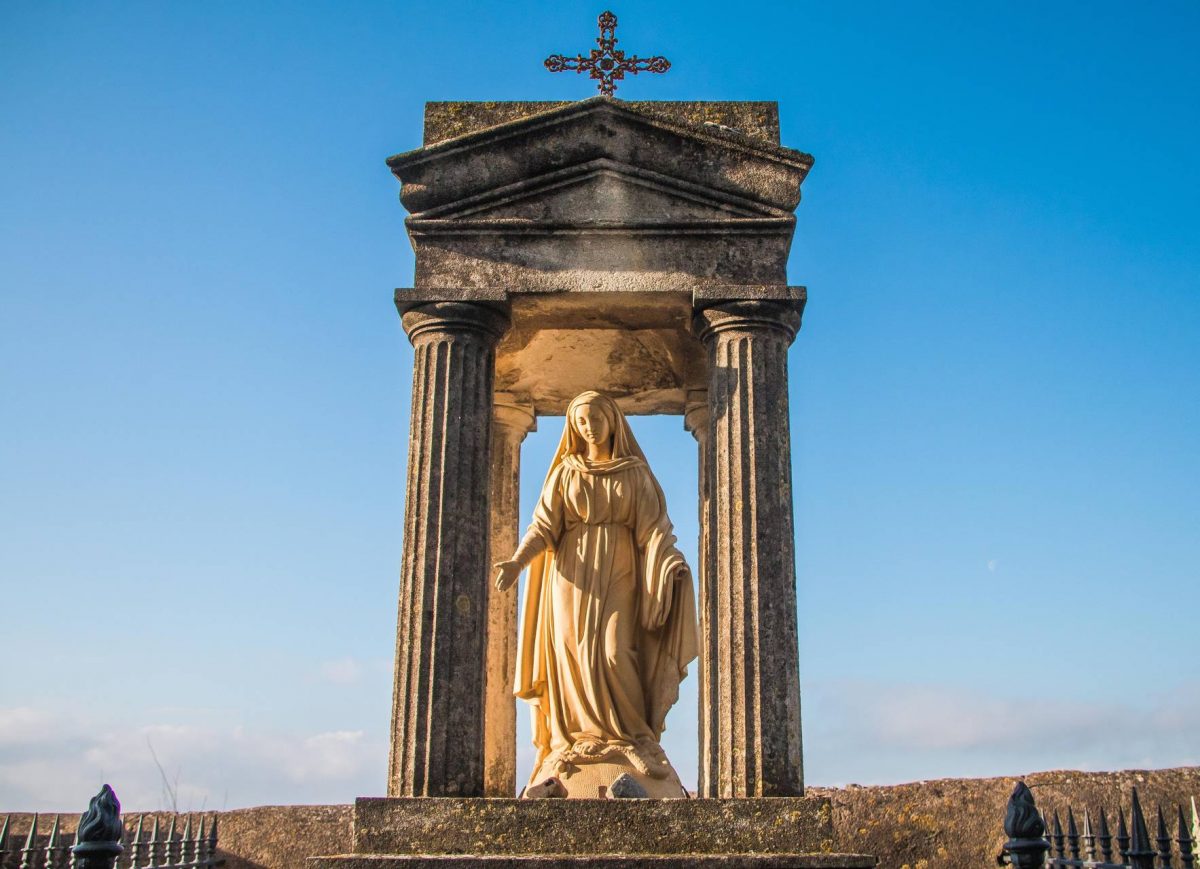
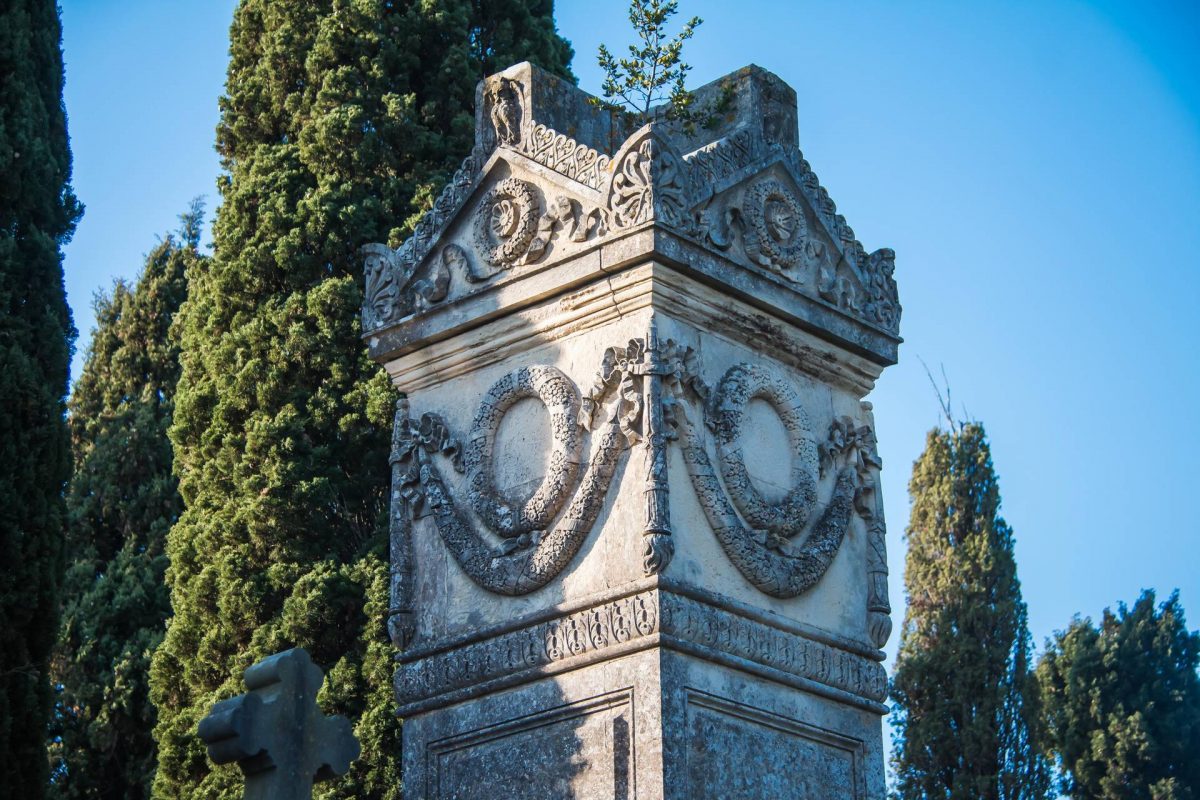
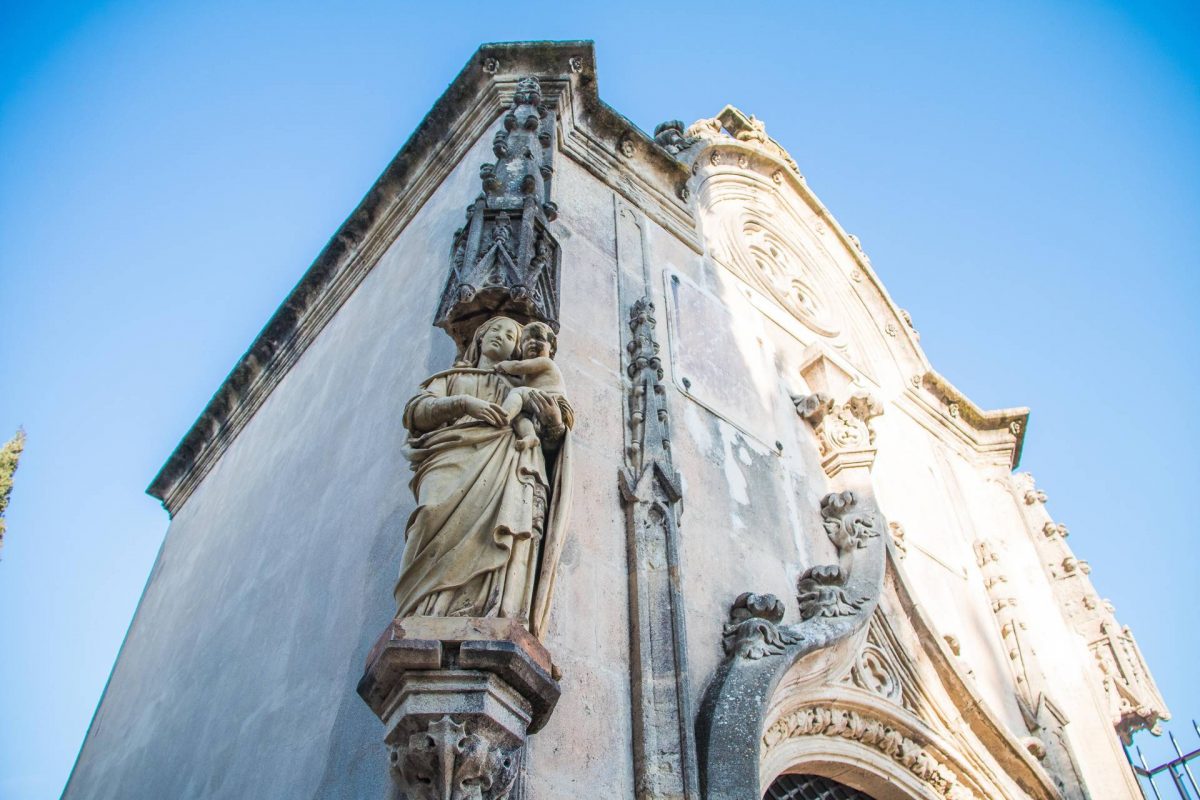
Cemeteries are gardens that bring us face to face with ourselves. In a moment of peace and contemplation. There is life after death!






